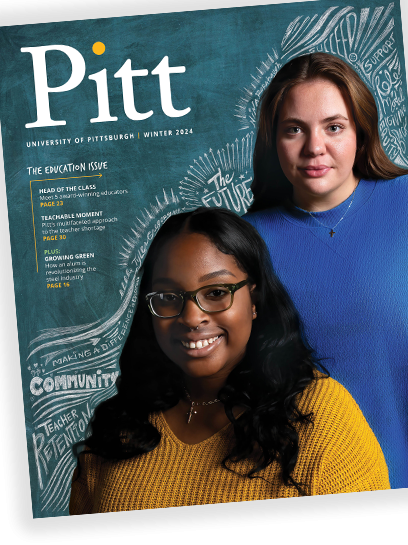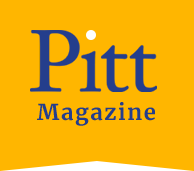

Many Americans face hurdles in getting health care, but almost all Americans can easily get to a pharmacy.
That’s the central premise driving much of the work of Lucas Berenbrok (PHARM ’13G, MED ’17), an associate professor of pharmacy and therapeutics in 51ľ«Ć·ĘÓƵ’s School of Pharmacy. He’s interested in the ways pharmacies can be entry points or delivery centers for certain aspects of health care.
During the COVID-19 shutdown in 2020, Berenbrok began a project to map the locations of the approximately 62,000 pharmacies in the country, to learn how pharmacies might be filling gaps in people’s health care needs.
That work to visualize pharmacy access grew to be an especially valuable tool over the past year, as many independent pharmacies — as well as national chains like Rite Aid, CVS and Walgreens — shuttered locations, leading to worries over what are known as “pharmacy deserts.” The this spring as part of a nationwide project on pharmacy closures.
Berenbrok also organized the inaugural Over-the-Counter Hearing Aid and Hearing Self-Care Symposium, held at 51ľ«Ć·ĘÓƵ on June 7. The event brought together thought leaders from pharmacy, audiology and public health to discuss how the newest class of hearing aids, which can be purchased over the counter (OTC), can increase patient access to hearing health care in the United States.
“What ties the two projects together is access,” Berenbrok says. “Pharmacies are in every neighborhood, and they’re open on nights, weekends, holidays, when some other health care providers might not be open. And so, people really look to pharmacies as a place where they can get health care, and they can help with their overall health and wellness.”
We spoke with Berenbrok about his work. The interview has been edited for length and clarity.
51ľ«Ć·ĘÓƵ Magazine: How did you get interested in being a pharmacist?
Lucas Berenbrok: I liked the chemistry piece of it, I liked the science behind it, and I liked this idea that I could help people in a very specific way. I grew up in Beaver County, and my first job was working at Giant Eagle stocking shelves, getting buggies, and my favorite part of the job was standing at the end of the conveyor belt and bagging groceries because I got to talk to people. It made me feel a part of the community, and so that’s kind of how and why I gravitate toward community pharmacy, because I like being that staple and that face of a community.
When I was in pharmacy school at 51ľ«Ć·ĘÓƵ, I was doing research on how community pharmacists could do more than dispense medication; they could offer vaccinations and comprehensive medication reviews. In 2012, I went to the American Pharmacists Association’s Annual Meeting to compete in the Patient Counseling Competition to represent 51ľ«Ć·ĘÓƵ on a national stage. At that meeting, I placed in the top 10.  It gave me some confidence, like, “I’m pretty good at talking to patients and doing the things that the community pharmacists do best.”
How did your mapping project come about?
I wanted to prove this talking point — people often say that 90% of Americans live within five miles of pharmacy — but it’s difficult to find how that stat came to be. Figuring there’s a gap in the literature, I got together with some folks from the Department of Geology and Environmental Science here at 51ľ«Ć·ĘÓƵ — they’re the mapping experts — and some of my colleagues at the School of Pharmacy. We assumed then that the COVID-19 vaccines would be given at community pharmacies, so we wrote a white paper that talked about pharmacy locations, when vaccines would be available and predicted pharmacies would be a place where they would be distributed and administered. That paper came out two or three days before the emergency use authorization was granted for the Pfizer COVID-19 vaccine. It was a very exciting time to have that analysis come out, and then see people look to it for vaccine planning initiatives.
Since then, we’ve applied the mapping to lots of different things that you can do at the community pharmacy. I have some projects with students looking at OTC birth control that just went on the market in the first quarter of 2024, and we have another group looking at OTC hearing aids. We’re able to apply where the maps are and to show that, when things are available at a community pharmacy, people can access them better.
How did you get involved with hearing aids?
In 2017, I was taking our first-year student pharmacists to senior community centers to do what we call a brown bag review. Seniors would bring their medications in a brown paper bag and then our students, with faculty, would review their medications and help with any questions or address safety and effectiveness.
I was thinking about other things that older adults need help with, and hearing came to mind. That’s how I connected with the audiology folks at the School of Health and Rehabilitation Sciences (SHRS). My long-term collaborator Elaine Mormer (a 51ľ«Ć·ĘÓƵ professor of audiology and the vice chair for clinical education communication science and disorders) had brought her students to do hearing screenings. Elaine looked at me and said, “Hey, you know a law was just signed that creates a new category of hearing aids that are going to be sold over the counter.”
No one in pharmacy was talking about this yet, but everyone in audiology was. And now we’ve developed a program to educate pharmacists about hearing health care and OTC hearing aids. We’re doing more research to find practice models and make sure that pharmacists are engaging with audiologists so it can be a team collaboration.
What about pharmacy closures? Are you seeing any patterns?
Over time, we'll start doing analysis to look at trends in the rate of closures. I also want to match this to openings, because the closure is only one side of the coin. If pharmacies are opening where pharmacies are closing, is there really a problem? Some other people have suggested that pharmacies are closing in lower-socioeconomic areas and opening in more affluent communities, but we haven’t done any of those analyses yet. That's going to be later in 2024.
When you got into this field, did you imagine that map-making would be an important part of your work?
You know, one of the ways that 51ľ«Ć·ĘÓƵ’s School of Pharmacy has been talking about PharmD, especially to prospective students, is how versatile that degree can be. Not everyone who graduates from pharmacy school ends up being a clinician — some go into managed care, some into consulting, some into the pharmaceutical industry — and so we like that talking point because it opens up this bigger world of opportunities for our graduates. Whenever I have students who work with me on projects, we always love to kind of spin in the fact that by doing this research, we’re advocating for what pharmacists can do. And we’re advocating for patients by expanding access. And I think that's a fun part of the research because we’re always looking for new ways in which the pharmacist can provide or bring value to the health system, to health care.
What do you wish more people knew about the role of pharmacists?
Pharmacy is an untapped resource and profession. We’re well trained. We’re the folks who get the most education on medications. And so part of our professional identity as pharmacists is as the medication experts, but we’re also health care providers and clinicians. When we think of pharmacists in this traditional dispensing role, that’s a very narrow view of what pharmacists are doing now.
Since COVID-19, there’s been a huge spotlight on our profession. We have an opportunity right now to capitalize on this limelight so that people can see us as clinicians and providers and people who can make a difference in public health. And I think our students are starting to see that, too. That’s part of the reason they’re attracted to pharmacy.


